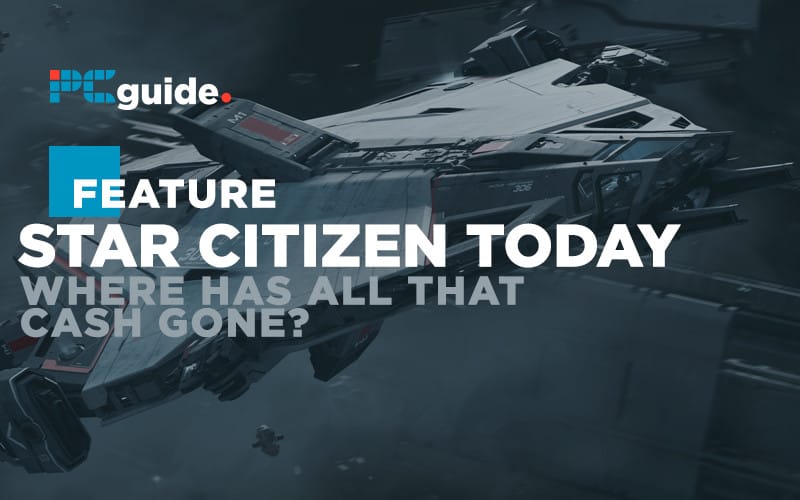
Star Citizen – that game that some people think might never be a game. The game that raised more in funding than the GDP of some small companies. Yes that one. We sent Mike Tomlinson out to find out where we are at with Star Citizen today.
By now, the chances are that you have heard of the PC gaming giant Star Citizen. It’s a game that has dwarfed thousands of others in its scope and ambition and it shows no sign of slowing down in 2020, despite having been in development for over nine years at this point. So, where did Star Citizen come from, what can players expect from Star Citizen and where Star Citizen is up to in 2020.
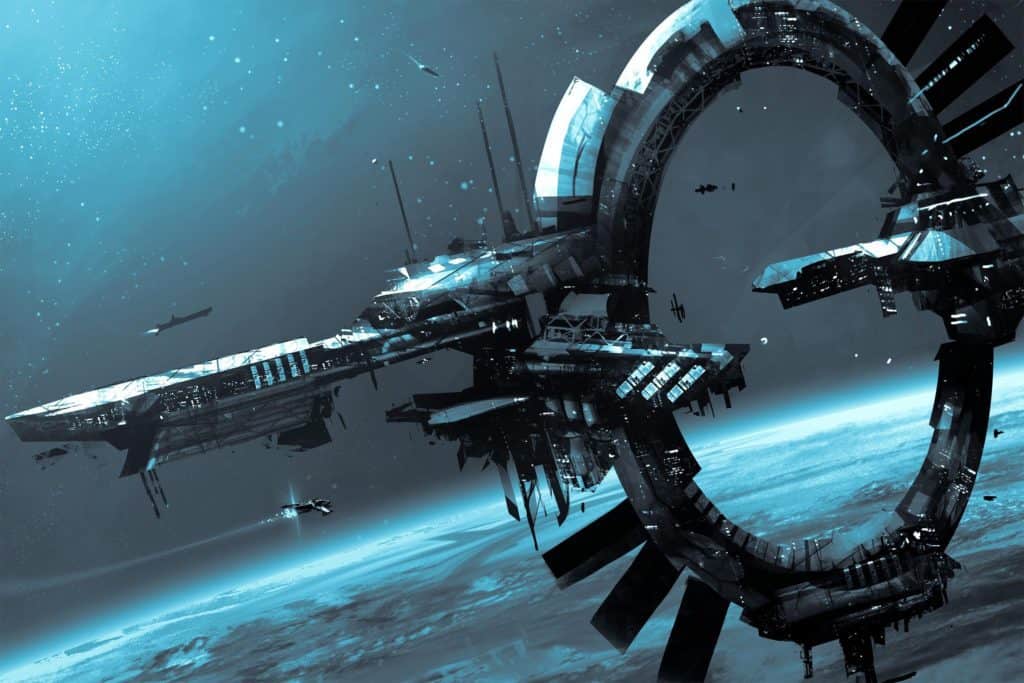
Star Citizen began as the pet project of Chris Roberts, best known for creating the Wing Commander series. Originally, Star Citizen was meant to act as the spiritual successor to the Wing Commander series, with expanded gameplay elements like ship to ship space combat evolving into first-person firefights, and even encompassing space simulation elements like freighting missions, escorting other players and bounty contracts – the list goes on and on.
Star Citizen started being developed by the team at Cloud Imperium Games – founded in 2012 by Chris Roberts with the explicit goal of developing and publishing Star Citizen in mind. Back in 2012, Star Citizen was intended to be an indie game, with the hulking mammoth of al of the promises it would come to make only seeing light once the game was formally introduced to the public on Kickstarter.
Its here, on the 6th of April 2013, that the problems in Star Citizens development truly begin. Star Citizen, as I said, was meant to only be an Indie game that carried on the spirit of the original Wing Commander series. The thing is though, that Chris Roberts’ vision seemed to far exceed what the original goal of Star Citizen was, and the public latched on to it.
In fact, the Star Citizen crowdfunding effort was so successful it made it into the Guinness Book of World Records, with the amount being entered into the book being $39,680,576 in 2014 – just one year after the original posting of the game.
Why did Star Citizen achieve this level of success though? A Wing Commander sequel could achieve a certain level of success for sure, especially when you account for the nostalgia dollars – but not to the extent that it achieved. But, when you look at the promises made during the initial Kickstarter campaign, it’s not hard to see why the regular fan of sci-fi or open-world RPGs would be interested in the game.
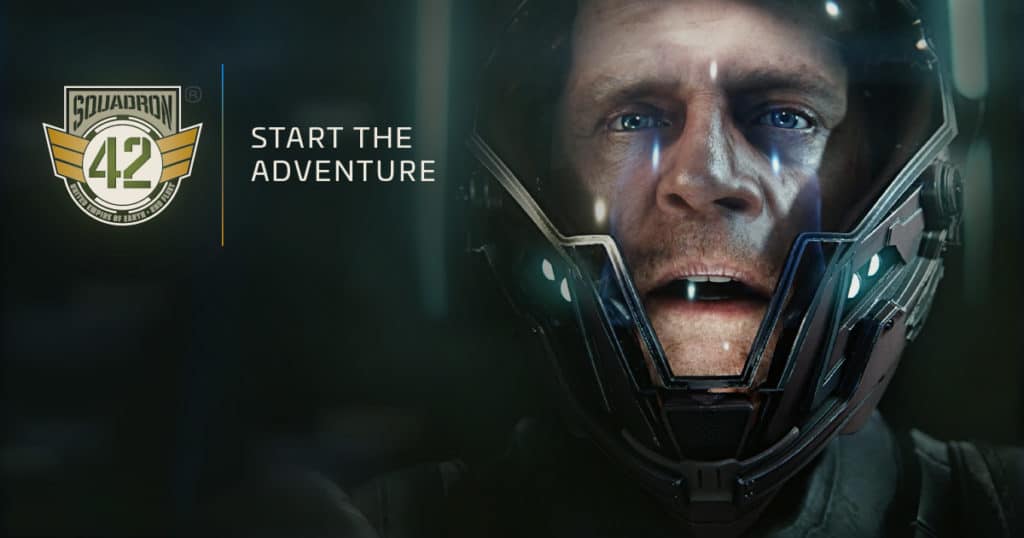
Amongst other promises made was the fact that Star Citizen would be a massively multiplayer online role-playing game, with an entirely separate single-player portion of the game titled ‘Squadron 42’ (more on that later), that would feature drop-in/ drop-out co-op gameplay, as well as a persistent universe, no microtransactions, and no subscription fee.
On paper, this looks like a fully fleshed out game with expansive multiplayer and single-player content, that was further expanded on in a document downloadable on the Kickstarter itself. And, it looks promising. If you made this offer to gamers today they would still be interested in playing, as a quality game with engaging mechanics and story that lacks microtransactions or other forms of monetization that could put a damper on the overall experience.
Then, you have the stretch goals. Once Star Citizen achieved the level of funding it would need in order to be made, Cloud Imperium started promising more in-game features for additional campaign goals being met – which led to more interest, more investment, and more stretch goals being added to the game.
What happened at this point in the games funding history is a positive feedback loop. More money meant more promises, which led to more interest and more investors, meaning more money – it went on and on, and the breadth of Star Citizen’s ambition was to be respected.
Chris Robert’s seemingly wanted to make the ultimate game in space simulation, and with the sky-high levels of interest he was seeing it was an entirely possible venture. He had received funding on a similar level with other triple-A games at the time and could use his newly formed studio to pursue development. The thing is though, after nearly ten full years of development on Star Citizen, backers of the project are yet to see a single element of the game come to full fruition.
Modular Gameplay
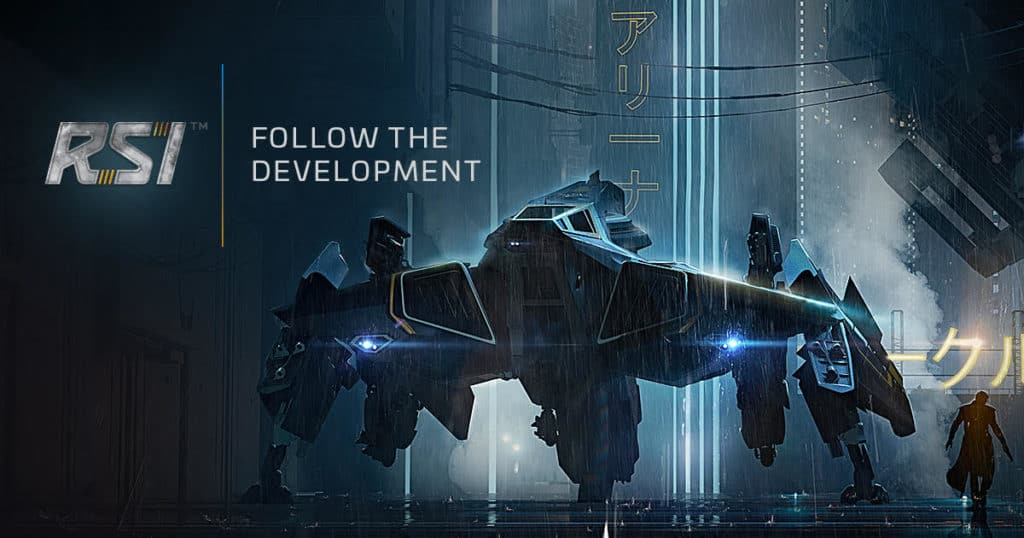
When I talk about the game coming to a state where it could be considered complete, I am talking about a finished product – something developers could (theoretically) stick in a box, and sell on shelves (or in a digital storefront), and charge a full price in exchange for a finished product.
With that in mind, Star Citizen (even after all these years of development) has not come close to achieving a finalized state even after all of these years in production. Instead, what the backers of Star Citizen have received is a series of updates for the game that have slowly introduced more and more promised gameplay features to Star Citizen gradually, with each of these updates being given a different ‘modular’ title.
The first module to appear for Star Citizen that gave its financiers a look into the game was the hangar module. In this update, players were able to explore the different ships that were eventually going to be in the game and modify their purchased ships to their fancy for use in the game when they became available.
Really, this was little more than a visual demo, as, despite the fact that players could interact with their ships, there was no flying or gameplay involved other than interacting with your ship in minimal ways (and cosmetic changes to the hangar itself). Players were understandably underwhelmed with this gameplay – but there was a sense within the community that eventually, all of the waiting would pay off, and there were some who thought that the ships were indicative of the gameplay to come – for example, some players saw the inclusion of holding cells in some of the ships to be indicative of future plans to hold other players captive.
So, outside of the hangar module and players finding supposed confirmation of future gameplay elements in the hangar, what other modules were there? Well, there was Star Marine. Star Marine provided Star Citizen players with a taste of what to expect from the first-person shooter aspects of the game, with players able to enter into deathmatch like modes and battle it out with other players. This mode included both grounded and zero-g gameplay, giving the players a better grasp on what it would be like to traverse and play in the Star Citizen universe – but, like the previous mode there was a drawback.
Star Marine took place in sterilized, secluded areas of what players expected to be a massive, expanded universe. And whilst the gameplay was promising, it still wasn’t as expansive as gamers might have hoped, with no real way to jump from ship to FPS combat as many players wanted to do. As a tech demo, it was fine – but it wasn’t the space sim that people had paid for.
Then there was the Arena Commander module. Arena Commander allowed players to fly the ships they had long been able to look at, even within a PvP or PvE situation – which seemingly placated a lot of the gamers looking to jump into the space combat action they had been promised. Arena Commander had decent physics, and the updates added to each module made it seem that Star Citizen was going to be a very good game once all the separate ingredients had been added to the same mixing pot, and allowed to merge. The thing is, this took a while to be put in place.
At the time though, gamers were happy to contend with this staggered and diversified approach to development as they thought it was all going to lead to a finished Star Citizen product that they would be able to play at the end of the development cycle – but that wasn’t the case.
Star Citizen’s Persistent Universe
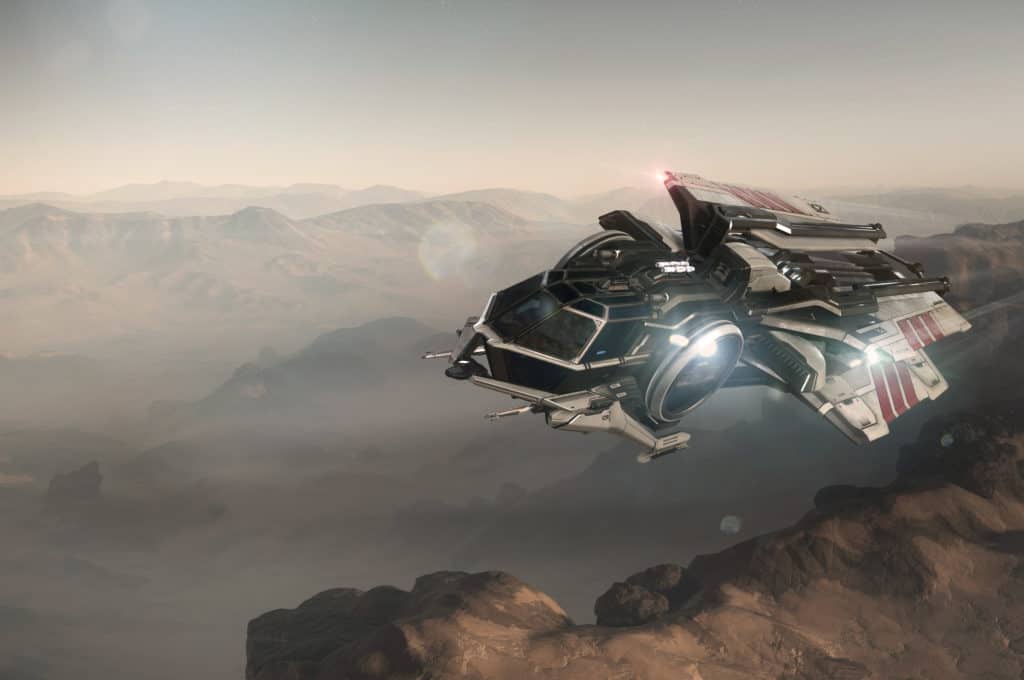
The persistent universe of Star Citizen came into being on the 11th of December 2015, and it was here that all the different aspects of the Star Citizen gameplay were combined into one cohesive unit, allowing players to do everything they were able to within the modules, and more.
After creating their own avatar, players are completely free to do as they please within the Star Citizen universe – they can mine, hunt bounties, take on specific player missions from NPCs in the world or just explore. The in-game exploration had been expanded as well – Players could now travel to planet surfaces, land, exit their ships, and explore the environment seamlessly. No loading screens occur either, with ships available to pilot both in the vacuum of space as well as in the atmosphere, and the planets that players visit all act differently, with different planet physics affecting aspects such as character jumping heights and bullet drop.
But, how much can you really do in the Persistent Universe? Realistically, the game is a lot smaller than it was once promised to be. The universe itself for one thing only features four planets, nine moons, a gas giant planet that can’t be accessed, and a smaller ‘planetoid’. Then there is the fact that each planet is procedurally generated, meaning that the quests themselves aren’t specifically curated for players – but instead of a general search and collect nature, not giving gamers the in-depth gameplay that they have wanted from the game since day one.
Basically, there is still a lot to be done when it comes to the state of Star Citizen. There are still questions over the eventual state of the game, and how other promised features are going to fit into the finalized picture. The size of the universe, the species involved, the engagement levels of the quests and player hubs are all factors that players are looking forward to seeing in the future, and it could be a long time until Star Citizen’s player base see a world that is as seemingly thought at World of Warcraft’s full lap for example.
Then there is the question of story. Alongside Star Citizen, players were promised a single-player standalone game set in the universe of Star Citizen, that made use of its game world and mechanics.
Squadron 42
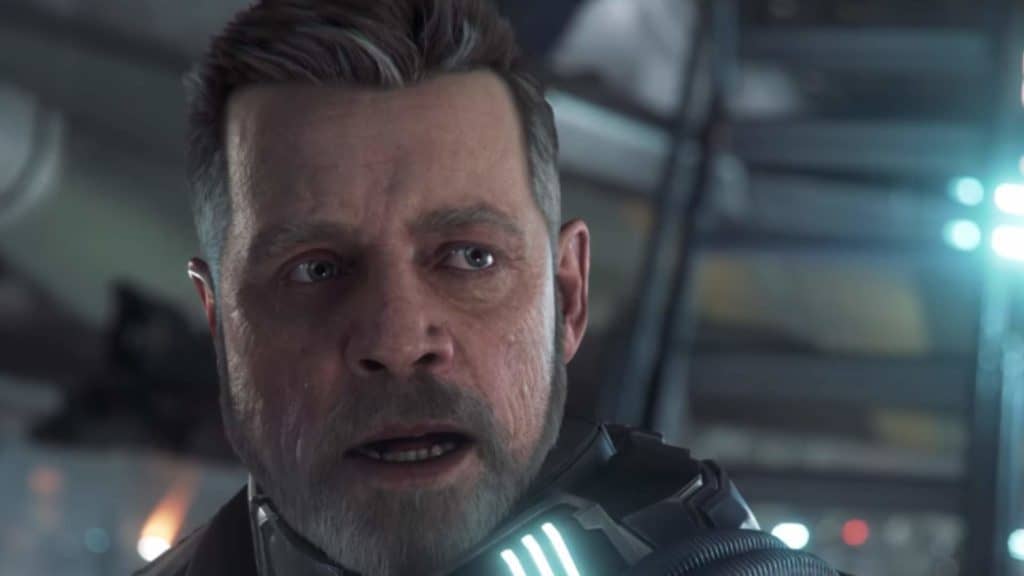
When it comes to Squadron 42, players have arguable had more information given to them than they have done in recent years with Star Citizen.
Looking at the promise of Squadron 42, it’s hard not to get excited about the concept. Every single promise about Star Citizen would be brought over and used within Squadron 42, including the immersive world, explorative gameplay, and engaging combat mechanics both in the vacuum of space and planetside all condensed into a streamlined single-player campaign.
It didn’t end there either. Huge, A-List names were attached to star in the campaign, including Mark Hamill, Andy Serkis, Gary Oldman, Gillian Anderson, and others all playing fully fleshed out characters within the game’s world. However, just like so much else where Star Citizen is concerned, the game got pushed back – again and again, until we are in the state we are today; Squadron 42 is massively behind schedule, and it no longer looks like the game will be shipping as a completed unit.
Taking lead from the Star Citizen playbook, the game will now be released episodically, meaning that the full campaign will be split into separate chunks that gamers can enjoy drip-fed rather than all at once.
Whilst this might seem like a good idea, giving players access to the game earlier than it would be available if it were to ship as a whole unit, there is a significant portion of the Squadron 42 investor crowd who are worried about what this might mean for the games ‘finalized’ release date.
Imagine if episode one was to release tomorrow for example. How long would it be until episode two drops with more content? And, with numerous deadlines being missed in the Squadron 42 timeline, how can gamers trust what Cloud Imperium Games say regarding the next release date? The sad answer is, that they can’t.
Its been a long time since the last proper trailer or in-depth look into the Squadron 42 universe that wasn’t just a developer tech reel or update.
So, what is the state of Squadron 42 today? Basically…non existent. Players have been advised that it could be the third quarter of 2020 that they have to wait until for the game to be in a playable state – but with Cloud Imperium Games’ track record and the Covid-19 situation combined, it could realistically be a lot longer until episode one is released – let alone the full game. But, if you are looking to get in on the action from day one, then you are going to need a decent PC to handle and appreciate the game fully.
Squadron 42 System Requirements:
- Memory – 16GB
- Graphics Card – AMD Radeon HD 7990
- CPU – AMD Ryzen 5 1600
- Storage – 40GB
· Operating System – Windows 7 (64 bit), Windows 8 or 8.1 (64 bit) or Windows 10 (64 bit)
Star Citizen In 2020
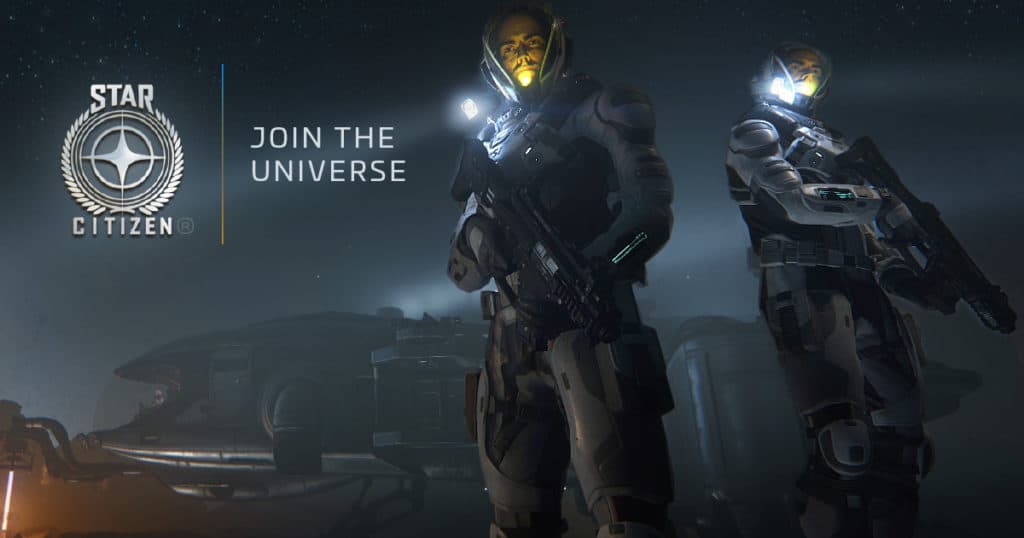
Right now players can expect a decent amount of playtime from the Star Citizen universe – the persistent universe will offer gamers a decent look into the promise of Star Citizen and drum up a lot of interest for the single-player spin-off Squadron 42 – but be aware that there is no real release date for Star Citizen – in fact, founder Chris Roberts has even said that he has given up stating the finalized release dates for his games as he always breaks deadlines.
Instead, what gamers should expect is that whatever version of Star Citizen they buy into will be built upon in the future, with whichever version they buy into acting as a gameplay demo to be revisited in the future time and again to see how the universe has grown in line with Chris Roberts vision.
What would you need to play Star Citizen today? Realistically, you will need the same tech as you would require to play Squadron 42, but make sure that you also buy yourself a decent gaming headset so that you can communicate with the other players you explore the expanded Star Citizen universe
Star Citizen System Requirements:
- Memory – 16GB
- Graphics Card – AMD Radeon HD 7990
- CPU – AMD Ryzen 5 1600
- Storage – 40GB
- Operating System – Windows 7 (64 bit), Windows 8 or 8.1 (64 bit) or Windows 10 (64 bit)
Will you be buying Star Citizen? Or have you already bought it, and are currently waiting for more to be added to the experience – or loving what you already have available to you in the game? Let us know all your thoughts in the comments below.
